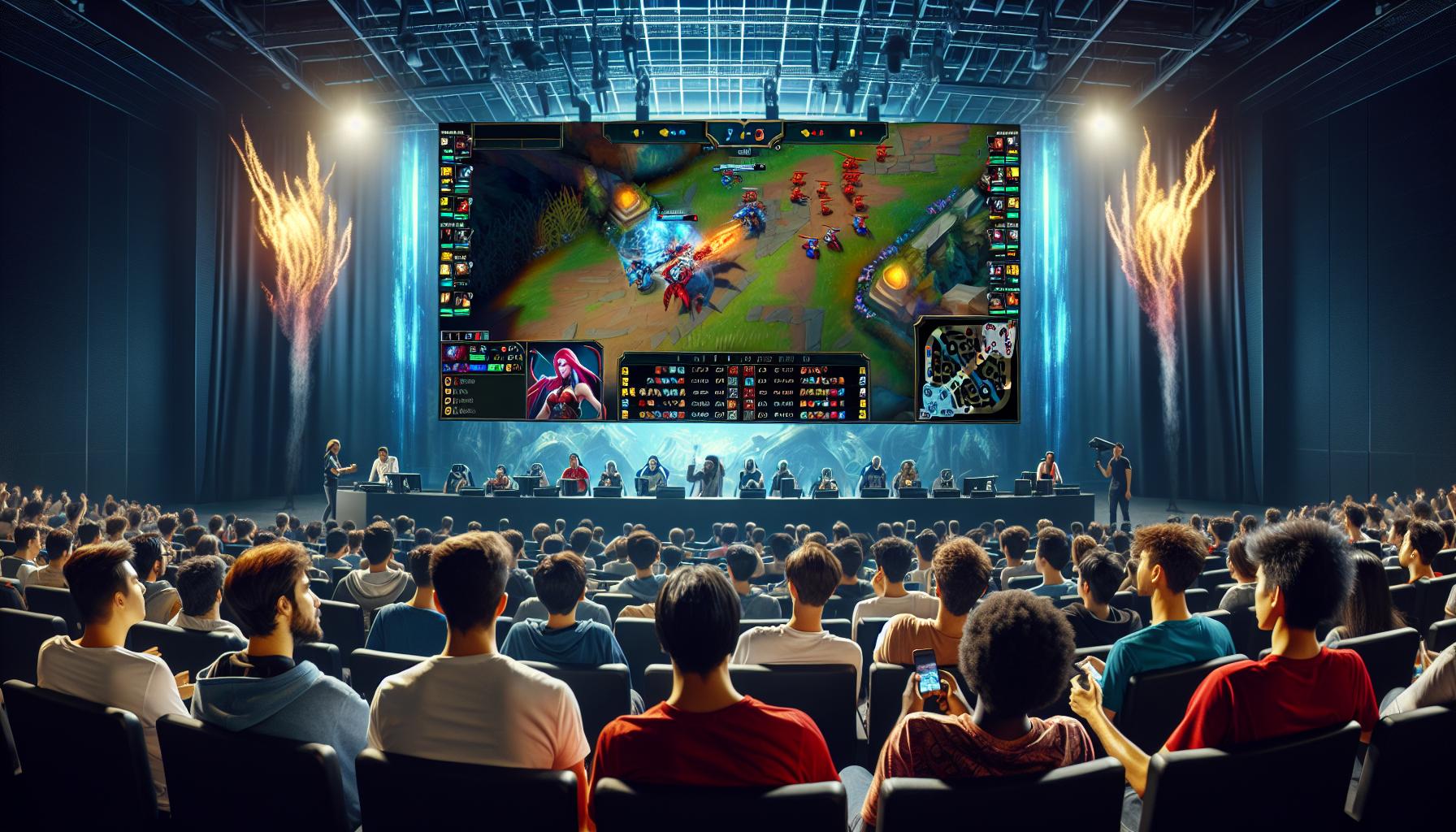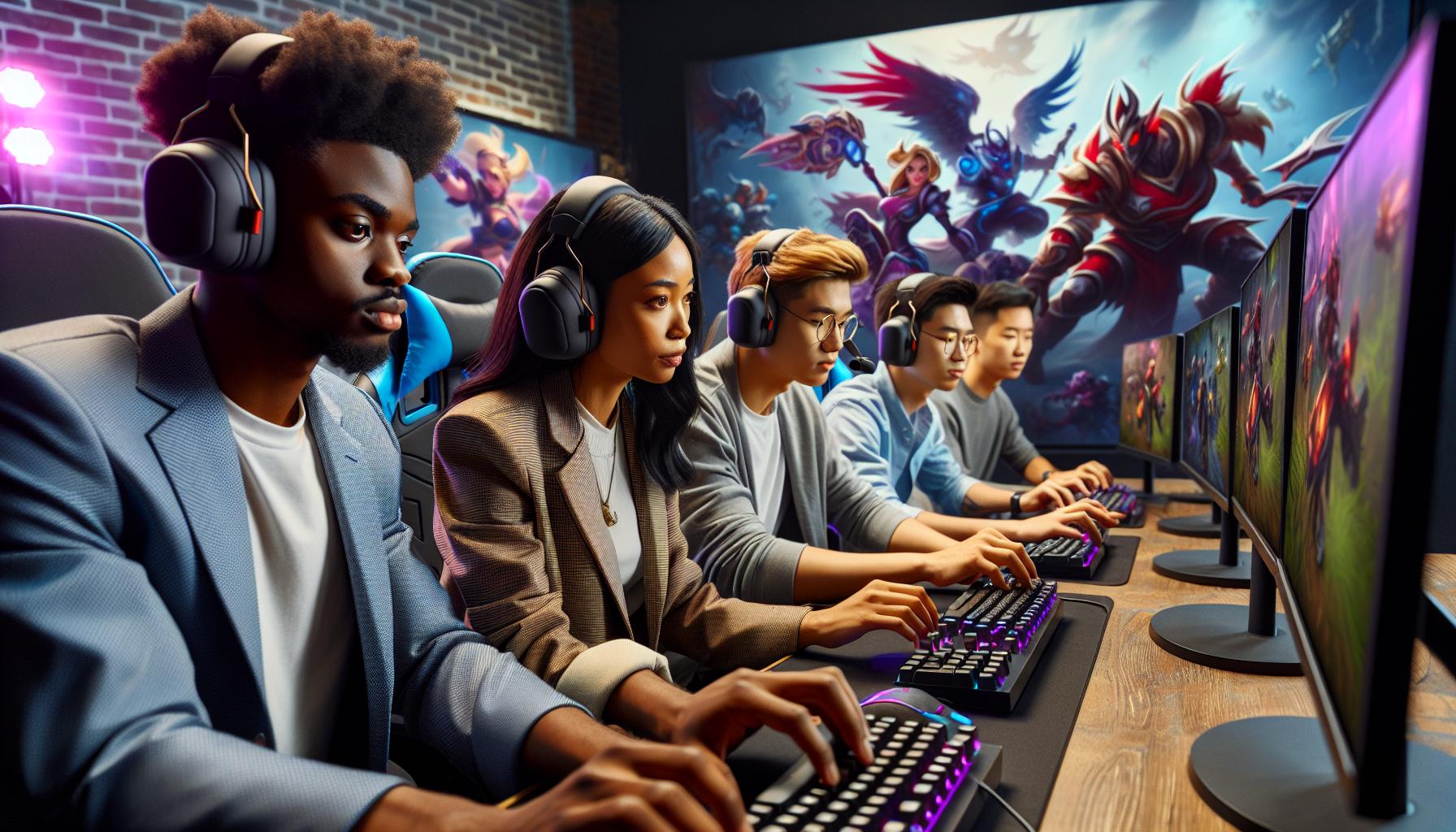Key Takeaways
- League of Legends has evolved from a casual multiplayer game in 2009 to a major esports phenomenon with millions of fans and players globally.
- The introduction of the League of Legends World Championship in 2011 marked a crucial milestone in competitive gaming, showcasing the game’s growing popularity.
- Establishing the League of Legends Championship Series (LCS) in 2013 structured competitive play, enhancing team organization and fostering community engagement.
- Significant viewership growth, exemplified by the 2017 World Championship attracting nearly 80 million viewers, highlights the game’s massive global reach.
- Streaming platforms like Twitch and YouTube have played a pivotal role in promoting League of Legends esports, increasing accessibility and audience engagement.
- The evolution of game mechanics and the rise of professional organizations have transformed the competitive scene, ensuring the game’s continued relevance and popularity.
From its launch in 2009, League of Legends has transformed from a simple multiplayer game into a global esports phenomenon. With millions of players and fans worldwide, its competitive scene has evolved dramatically, setting the stage for iconic tournaments and legendary rivalries.
As teams battle for supremacy in the Summoner’s Rift, the history of League of Legends esports showcases groundbreaking moments that shaped the industry. From the first World Championship to the rise of franchises, this journey reflects not only the game’s growth but also the passion of its community. Understanding this history reveals why League of Legends remains a cornerstone of esports culture.
League of Legends Esports History
League of Legends esports began shortly after the game’s launch in 2009. The first competitive events emerged organically, with small community tournaments paving the way for larger organized competitions. In 2011, Riot Games introduced the League of Legends Season One World Championship, marking a significant milestone. The event drew over 1.6 million concurrent viewers, solidifying the game’s popularity.
In 2013, the introduction of the League of Legends Championship Series (LCS) established a professional framework for competition. This structure improved team organization, player contracts, and financial stability. The LCS created regional leagues in North America and Europe, promoting local rivalries and fostering community engagement.
By 2015, the esports scene had expanded beyond North America and Europe, with regional leagues established in Asia, Latin America, and other regions. The World Championship continued to grow in prestige, with the 2017 tournament attracting nearly 80 million viewers. This year also marked the introduction of the Mid-Season Invitation (MSI), showcasing top teams from different regions.
The successful rise of League of Legends esports contributed significantly to the development of broadcasting platforms. Platforms like Twitch and YouTube began to host live events and highlight content, allowing a wider audience to engage with the scene. In 2020, the COVID-19 pandemic shifted many events online; adaptation showcased the resilience of the esports community.
Throughout its history, League of Legends esports has produced legendary teams and players. Brands such as SK Telecom T1 and FunPlus Phoenix became synonymous with success, while players like Faker and Uzi achieved iconic status. These narratives, driven by intense rivalries and dramatic matches, captured the attention of fans globally.
The evolution of League of Legends esports represents a combination of grassroots origins and mainstream acceptance. The continued innovation and passion from the community ensure its position as a cornerstone of the esports landscape.
Early Years of Competitive Play

League of Legends’ competitive scene began shortly after the game’s launch in 2009. Early tournament structures fostered community engagement and participation, leading to a vibrant competitive environment.
Emergence of Tournaments
Small community tournaments started appearing in 2010, paving the way for more structured events. Notably, the 2011 League of Legends Season One World Championship marked a significant turning point, attracting over 1.6 million concurrent viewers and establishing the foundation for future competitive play. Major tournaments like the IEM and MLG also contributed to the growth of the esports landscape. These events demonstrated that competitive play could attract large audiences, enhancing the legitimacy of esports. The introduction of the League of Legends Championship Series (LCS) in 2013 further solidified the tournament structure, creating a regular schedule of high-stakes matches that captivated fans.
Pioneer Teams and Players
Pioneer teams and players played crucial roles in shaping the early competitive scene. Teams such as Fnatic and Counter Logic Gaming emerged as frontrunners, establishing standards for teamwork and strategy. Players like Faker and Doinb became legends, showcasing exceptional skill and leading their teams to victory in various tournaments. Their performances not only garnered individual recognition but also sparked rivalries that fueled fan engagement. These pioneers set the stage for future generations of players and teams, creating a legacy that continues to influence the competitive landscape of League of Legends.
Growth and Popularity

League of Legends esports has experienced tremendous growth and popularity since its inception. The game’s competitive scene has flourished, driven by major events, iconic teams, and the rise of streaming platforms.
Major Events and Championships
Key tournaments have shaped the League of Legends esports landscape. The League of Legends World Championship, initiated in 2011, stands as the pinnacle of competitive play, consistently attracting millions of viewers. Noteworthy events like the Mid-Season Invitational (MSI) and regional leagues in North America, Europe, and Asia foster intense rivalries, creating a sense of global community. In 2017, the World Championship reached nearly 80 million concurrent viewers, showcasing its reach and significance. Additional tournaments, such as the Intel Extreme Masters (IEM) and Major League Gaming (MLG), provided critical exposure, legitimizing esports as a competitive entity. These major events incentivize teams to invest in player development and audience engagement, further elevating the sport.
Influence of Streaming Platforms
Streaming platforms significantly impacted the growth of League of Legends esports. Twitch emerged as the primary platform for broadcasting events, facilitating real-time player interactions and enhancing viewer participation. During the COVID-19 pandemic, the shift to online events only increased viewership, as audiences sought entertainment from home. YouTube also contributed to this trend, allowing fans to access highlights and live matches at their convenience. Content creators and streamers expanded the game’s reach, attracting new players and casual viewers alike. The accessibility of live streaming solidified the relationship between fans and the esports community, creating a robust ecosystem that continues to thrive.
Evolution of the Competitive Scene

League of Legends esports underwent significant changes since its inception, adapting to the dynamic needs of players and fans alike. The competitive landscape evolved through advancements in game mechanics and the rise of professional organizations, which shaped its current state.
Changes in Game Mechanics
Game mechanics significantly impacted the competitive scene, with regular updates that balanced champions and introduced new elements. Key changes, like the introduction of the jungle role in 2011, diversified gameplay and strategy. Patch adjustments maintained competitive integrity, fostering a constantly evolving metagame. Champion reworks, such as the overhaul of characters like Ryze and Soraka, shifted playstyles and team compositions. In 2019, the “Elemental Dragon” system enhanced strategic depth, adding layers to gameplay. Each season’s adjustments fueled innovation, encouraging teams to adapt and refine strategies to stay competitive.
Rise of Professional Organizations
Professional organizations emerged around 2013, marking a new era for League of Legends esports. Teams like TSM and Cloud9 established structured rosters and dedicated coaching staff, professionalizing the approach to competition. Sponsorship deals, with brands like Red Bull and Coca-Cola, provided financial backing, enabling organizations to invest in player development and training facilities. The establishment of regional leagues, including the LCS and LEC, created platforms for consistency in competition. Notable franchises like G2 Esports and T1 became household names, setting performance benchmarks. These organizations also prioritized fan engagement through content creation, solidifying their presence in the esports community and fostering loyalty among fans. The growth of professional organizations contributed to the stability and legitimacy of League of Legends as a leading esport.
Global Expansion
League of Legends expanded globally through the establishment of regional leagues and international competitions, fostering a diverse and engaged community.
Regional Leagues and Championships
Regional leagues like the LCS, LEC, LCK, and LPL emerged to organize competitive play. LCS, founded in 2013, introduced a structured league format in North America, featuring top teams and consistent scheduling. LEC, Europe’s counterpart, started in 2013, enhancing competitiveness and reaching millions of fans. LCK, in South Korea, became a benchmark for high-level play, known for its intense rivalries. LPL, China’s premier league, experienced rapid growth, attracting significant sponsorships and producing world-class talent. Each league hosts seasonal championships, culminating in regional playoffs, where teams vie for spots at the World Championship, further energizing local fans and players.
International Competitions
International competitions, including the annual League of Legends World Championship, spotlight top teams from various regions. The inaugural World Championship took place in 2011, featuring a prize pool of $100,000, while 2017’s event boasted an impressive $4.2 million. The Mid-Season Invitational (MSI), launched in 2015, showcases the best teams from regional leagues, amplifying global rivalries. Events like the All-Star event engage fans with unique matchups and player interactions, promoting a more inclusive esports culture. Overall, these international competitions solidify League of Legends’ place as a premier global esport, captivating millions of viewers annually.
The Power of Community And Competition
League of Legends has carved out an indelible mark in the esports landscape. Its journey from a simple game to a global phenomenon showcases the power of community and competition. Iconic tournaments and legendary players have not only shaped the game but also inspired countless fans worldwide.
As the esports industry continues to evolve, League of Legends remains at the forefront, pushing boundaries and setting new standards. With its dynamic gameplay and ever-growing audience, the future looks bright for this beloved title. The legacy of League of Legends esports will undoubtedly influence generations to come, solidifying its status as a cornerstone of competitive gaming culture.